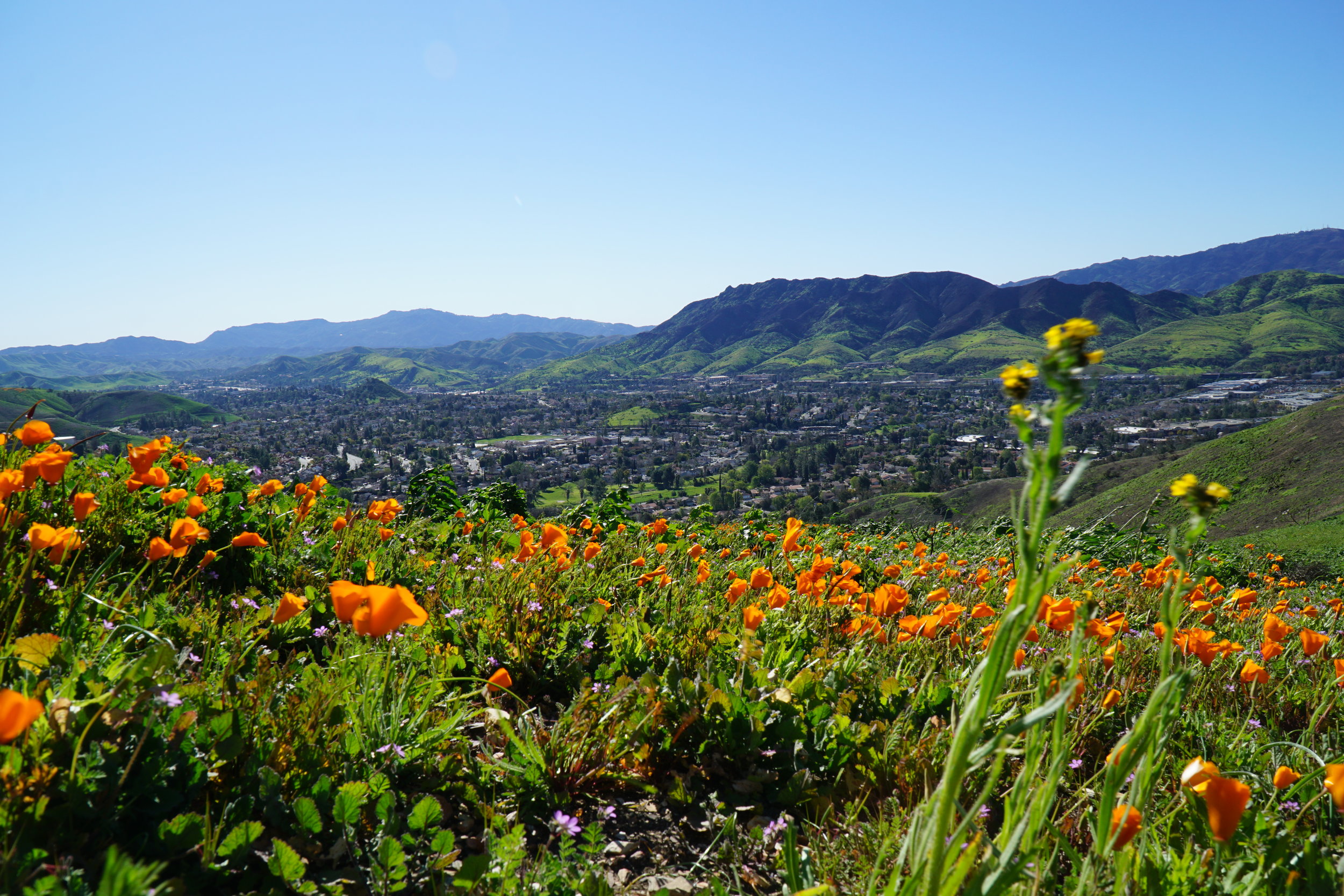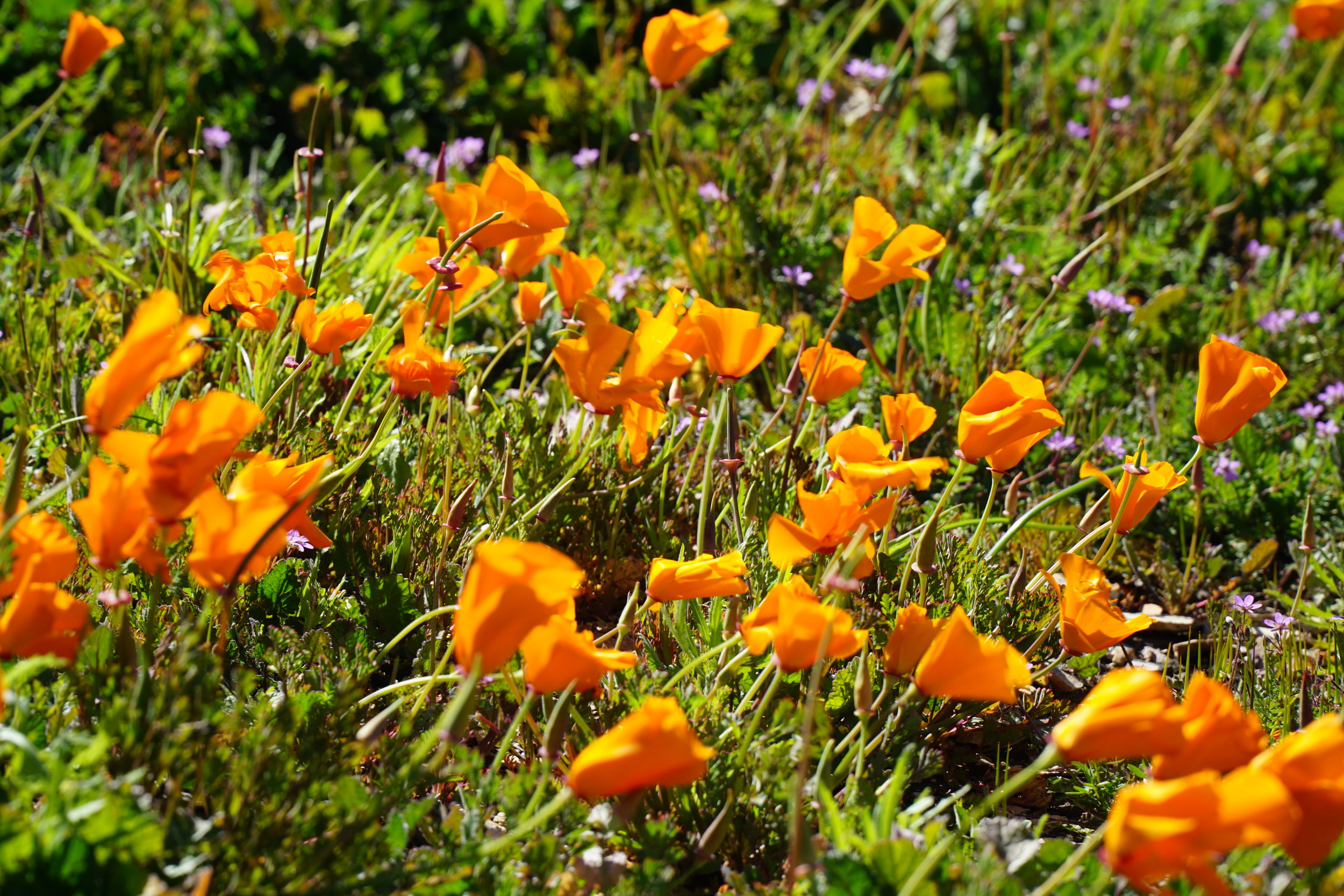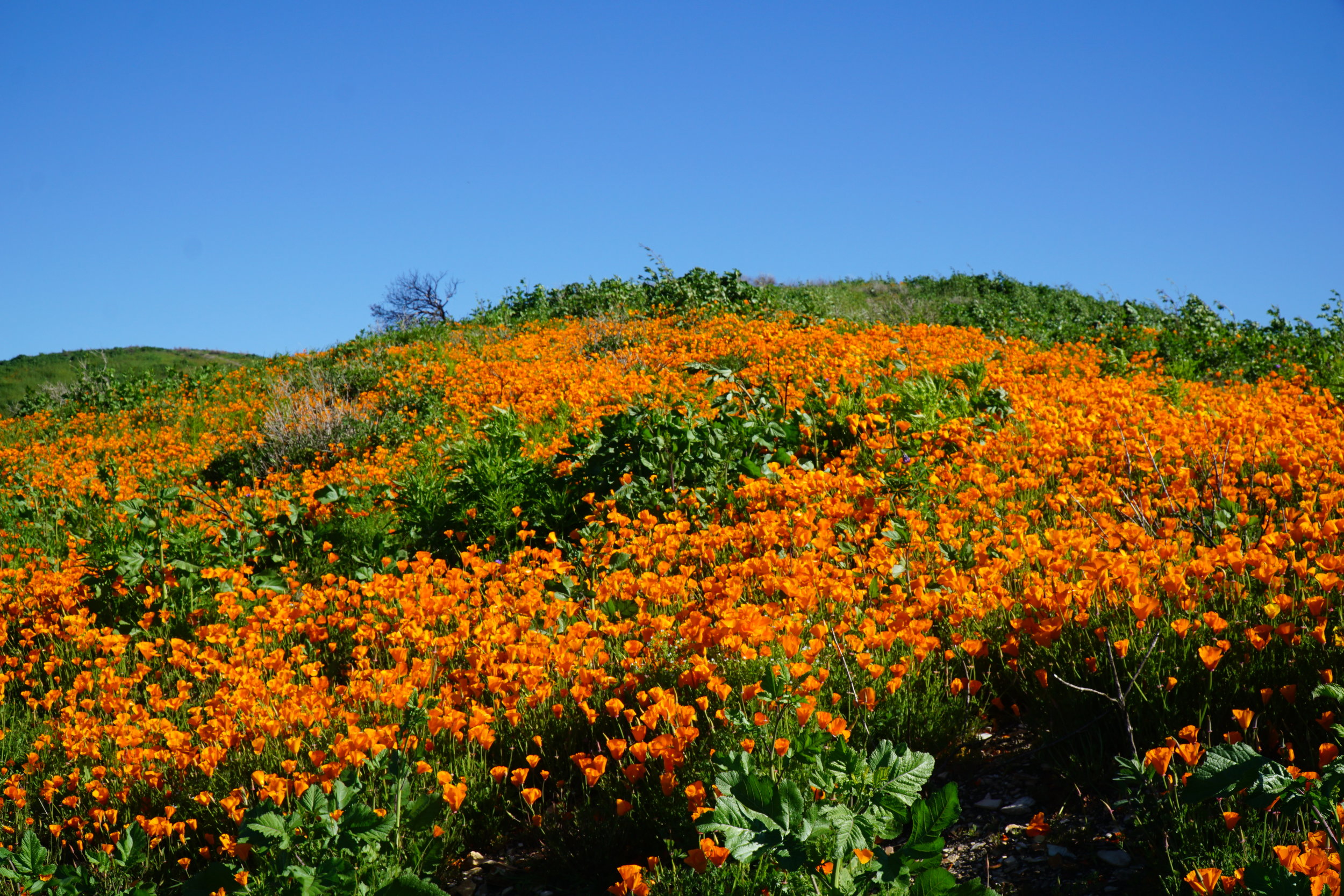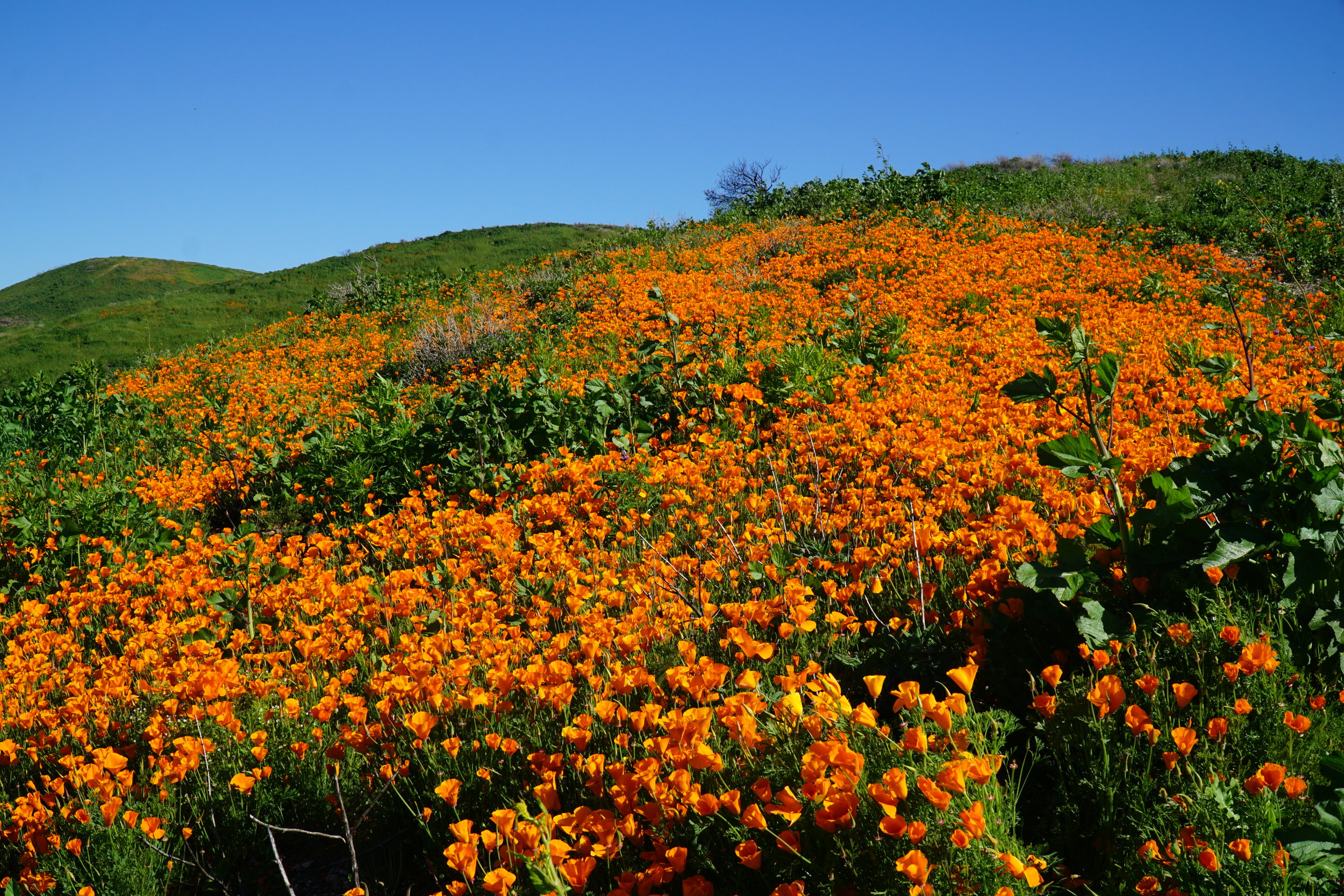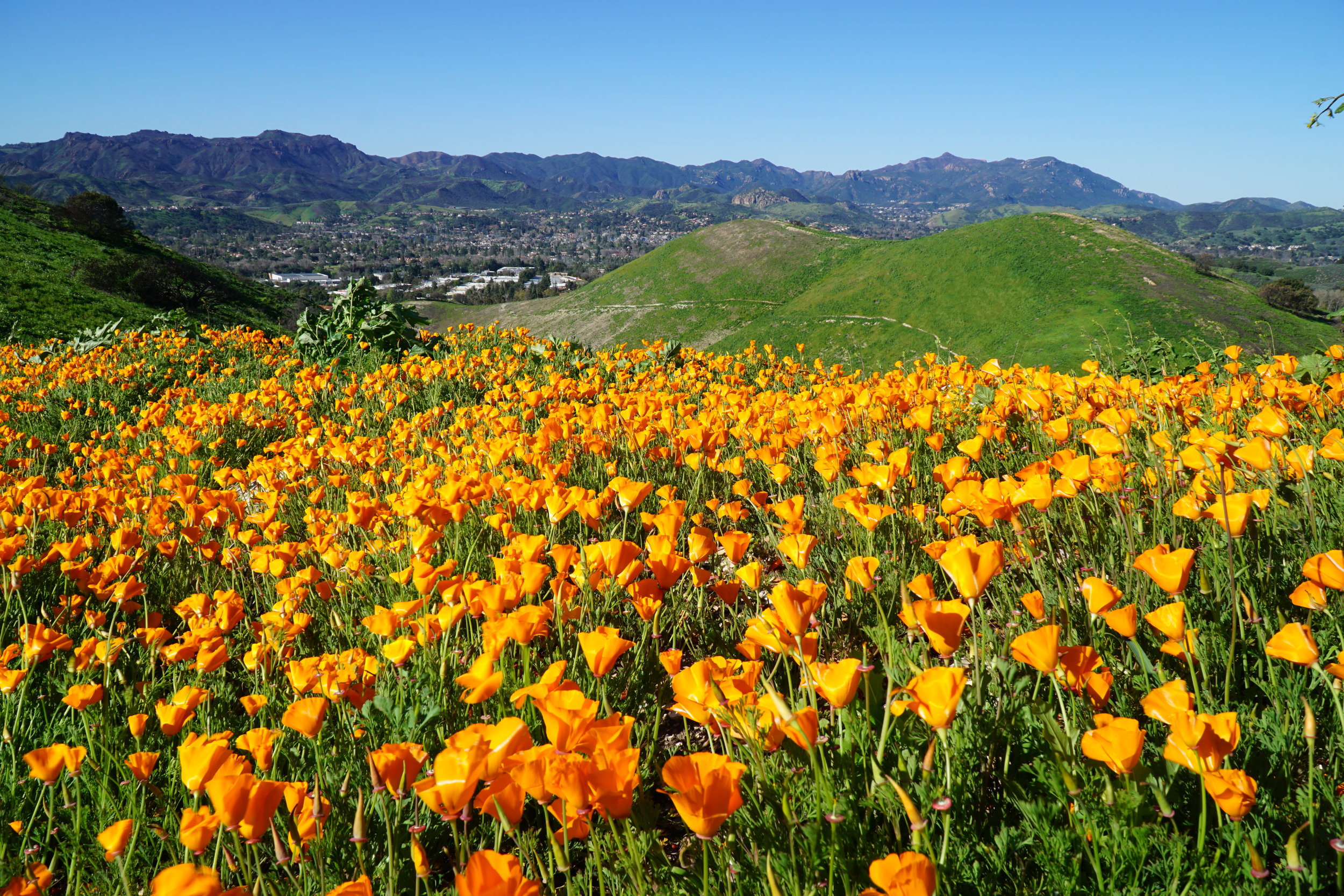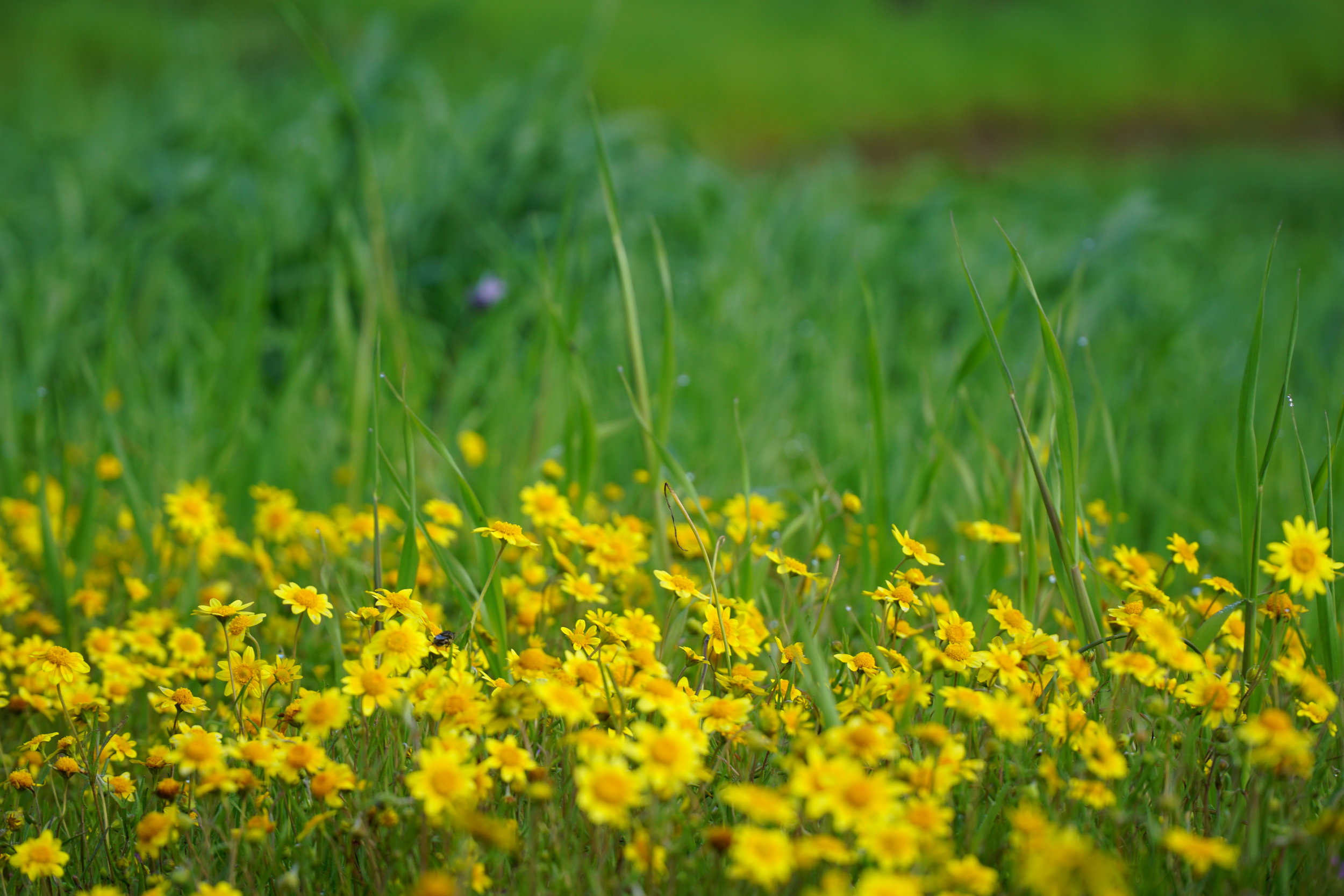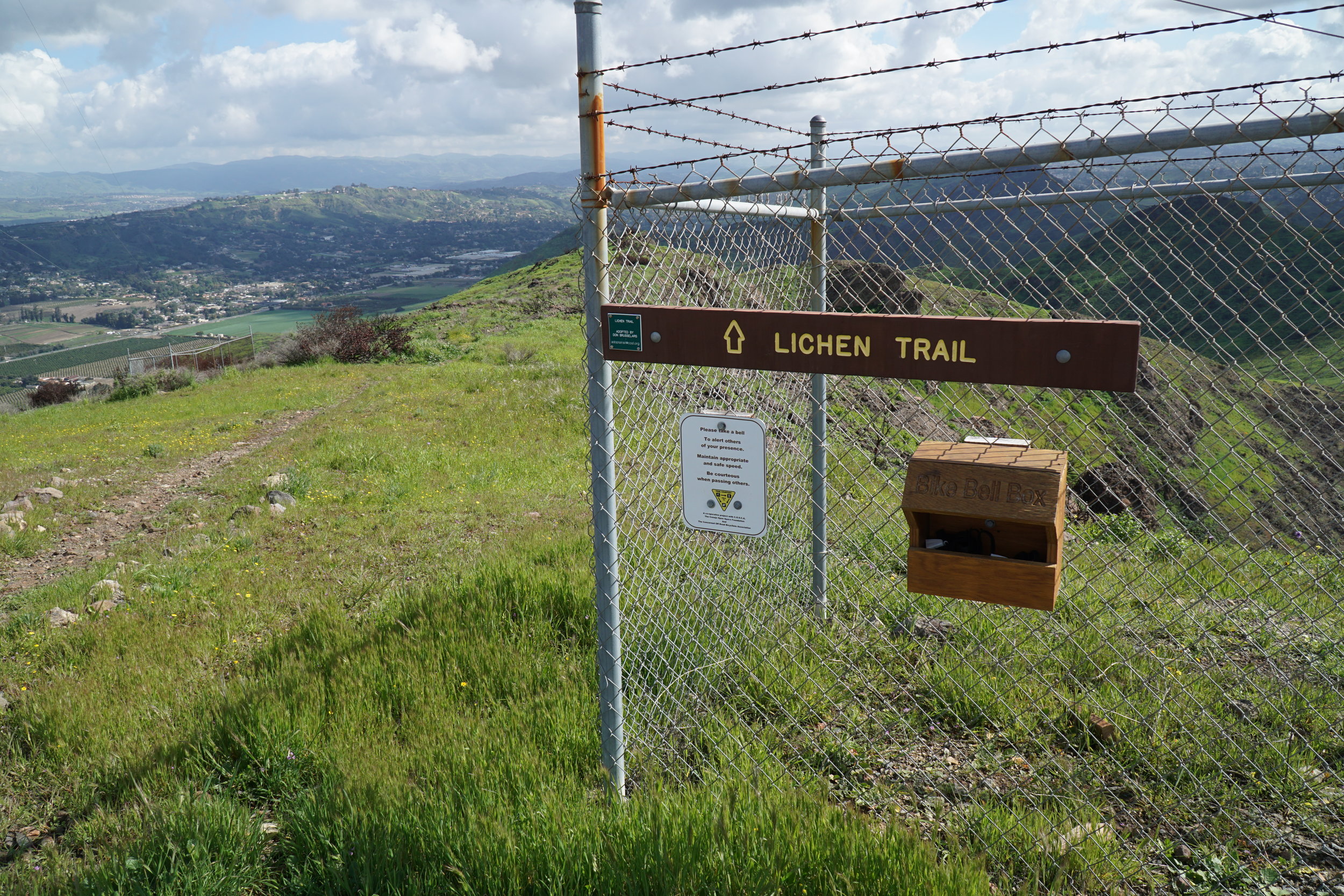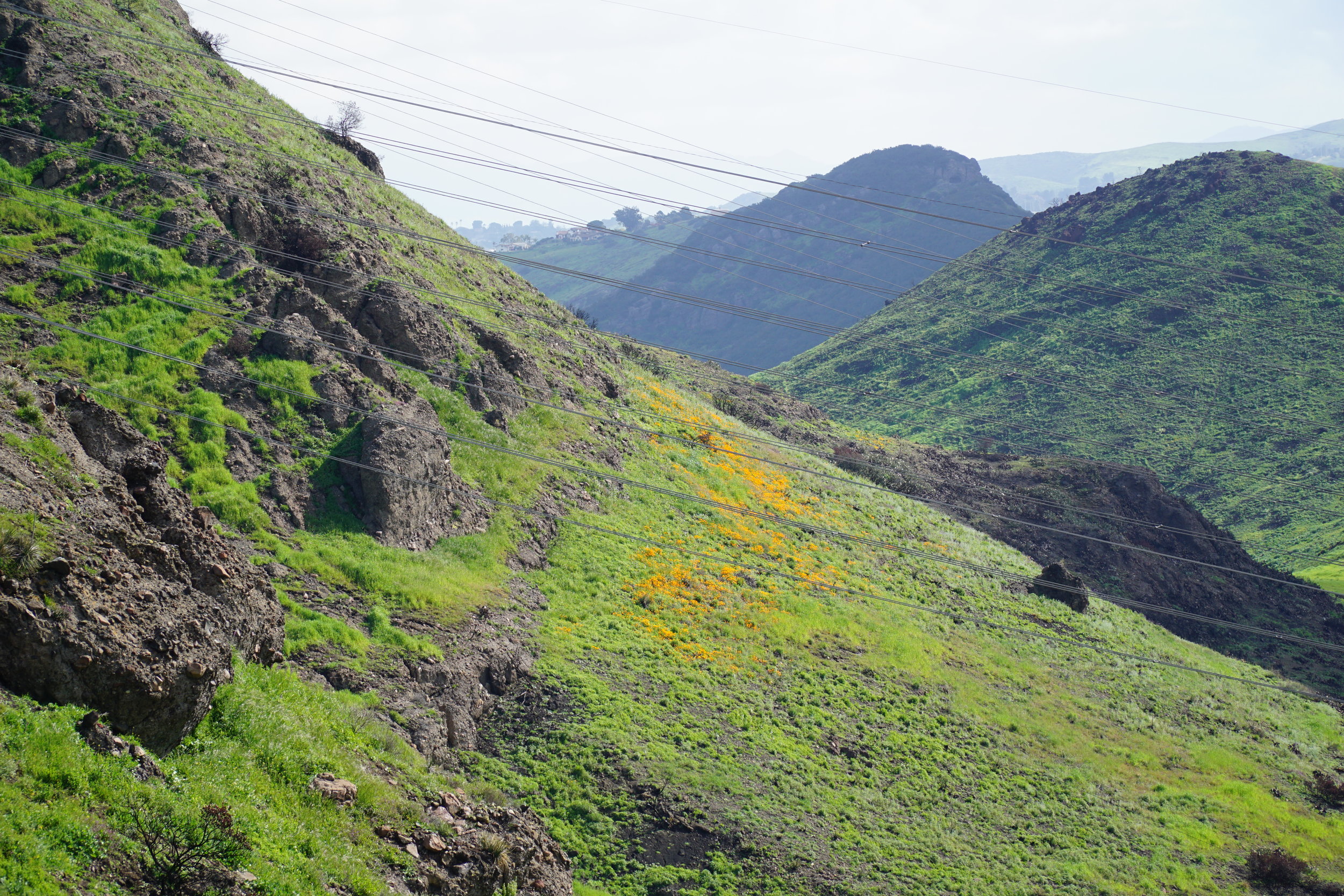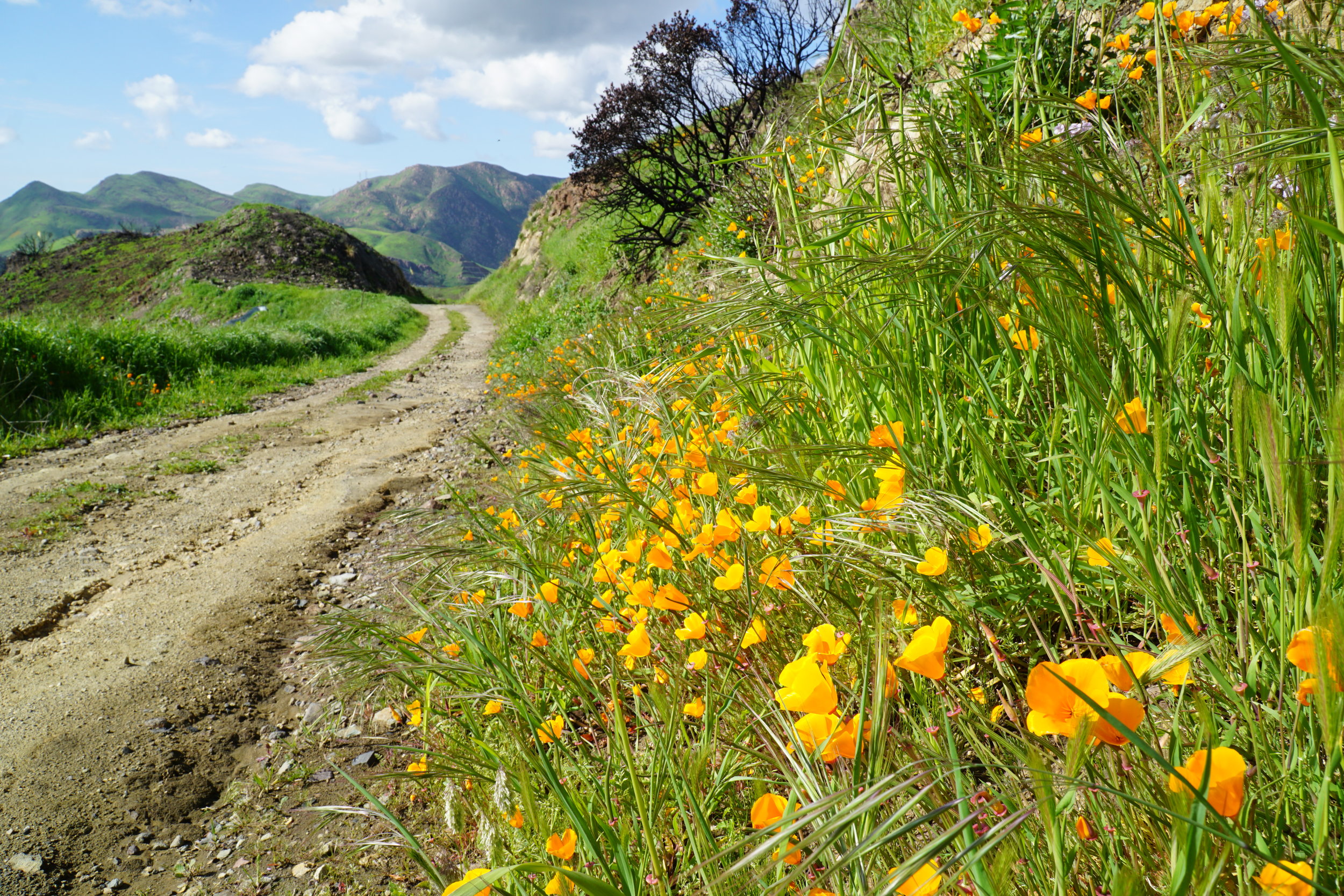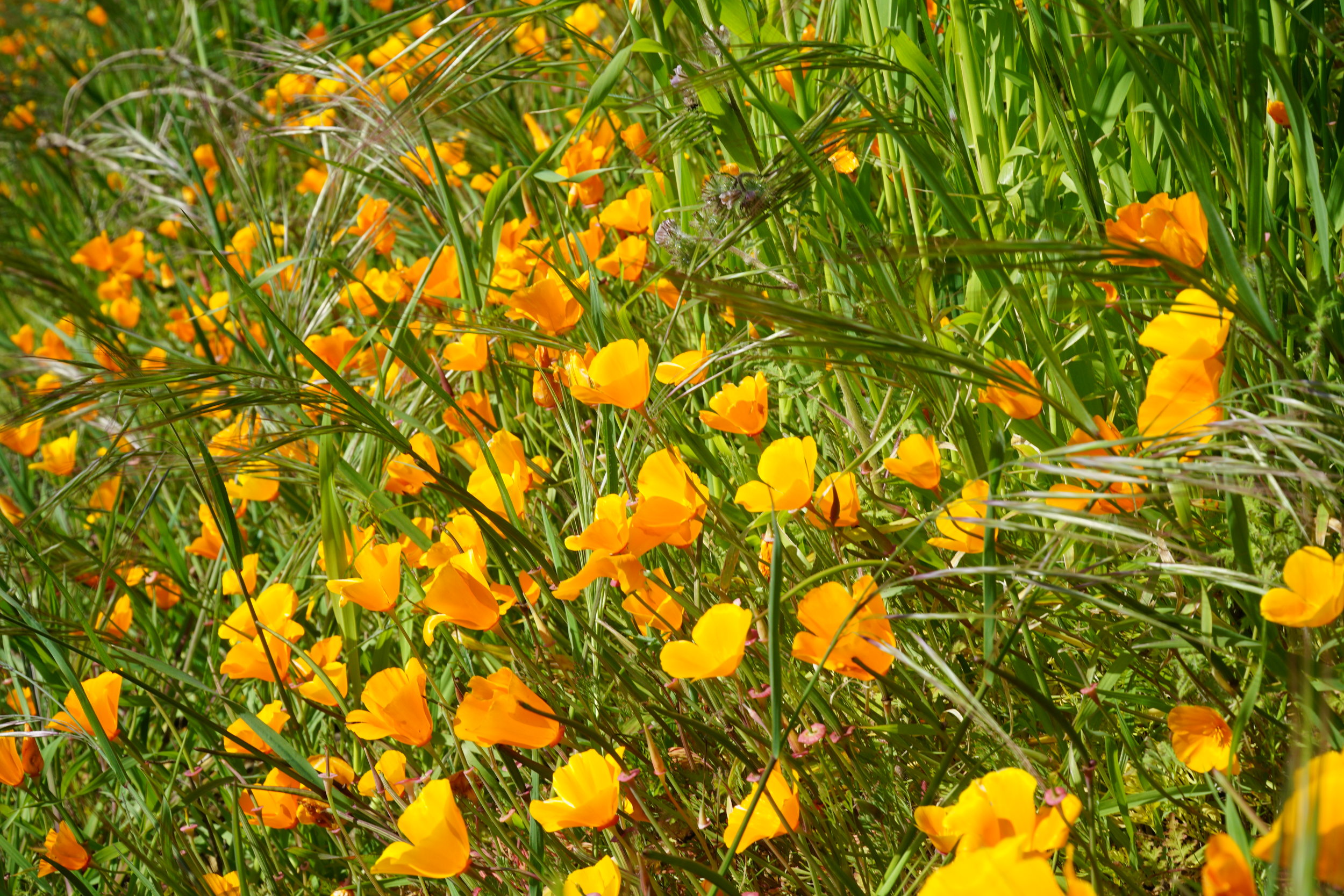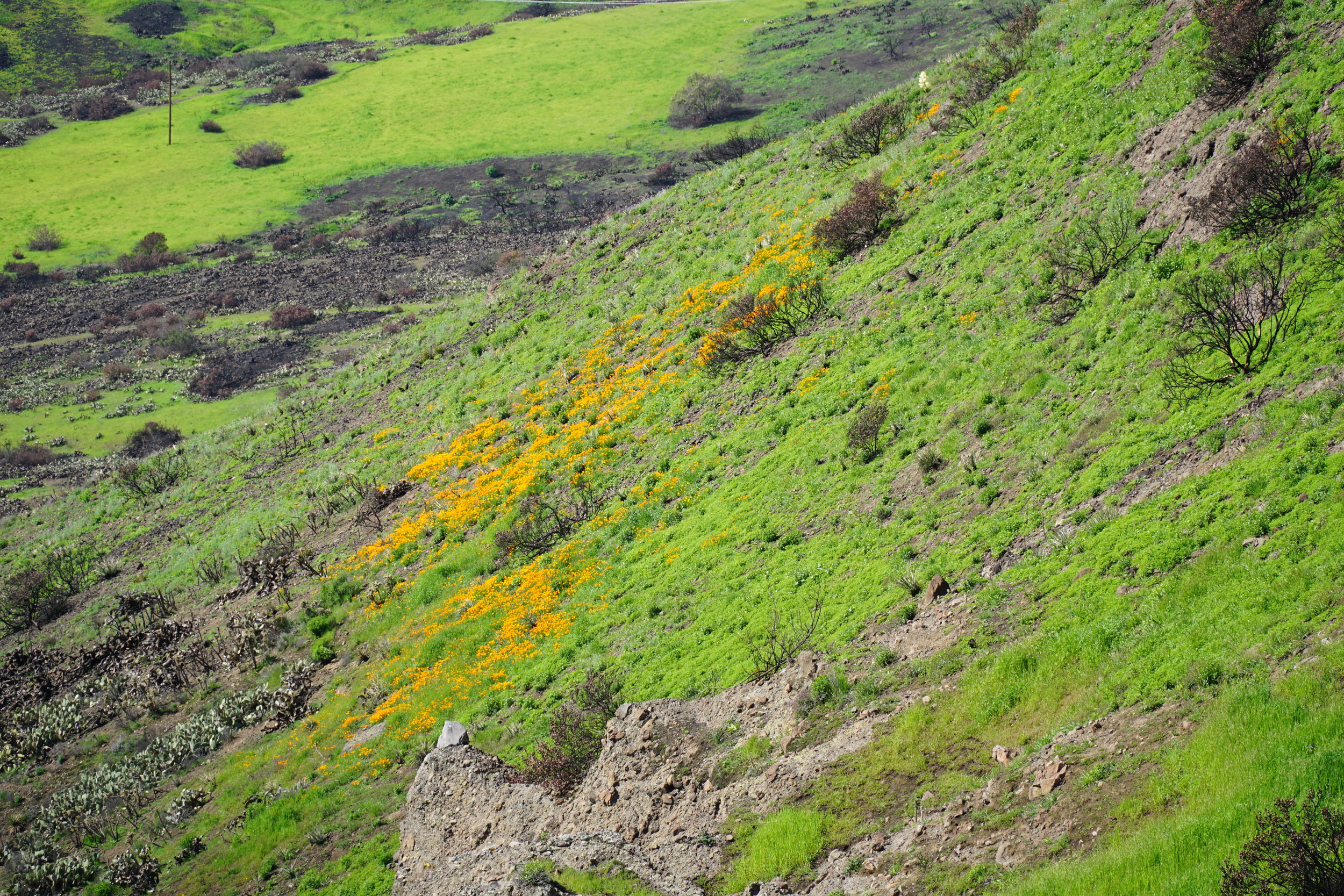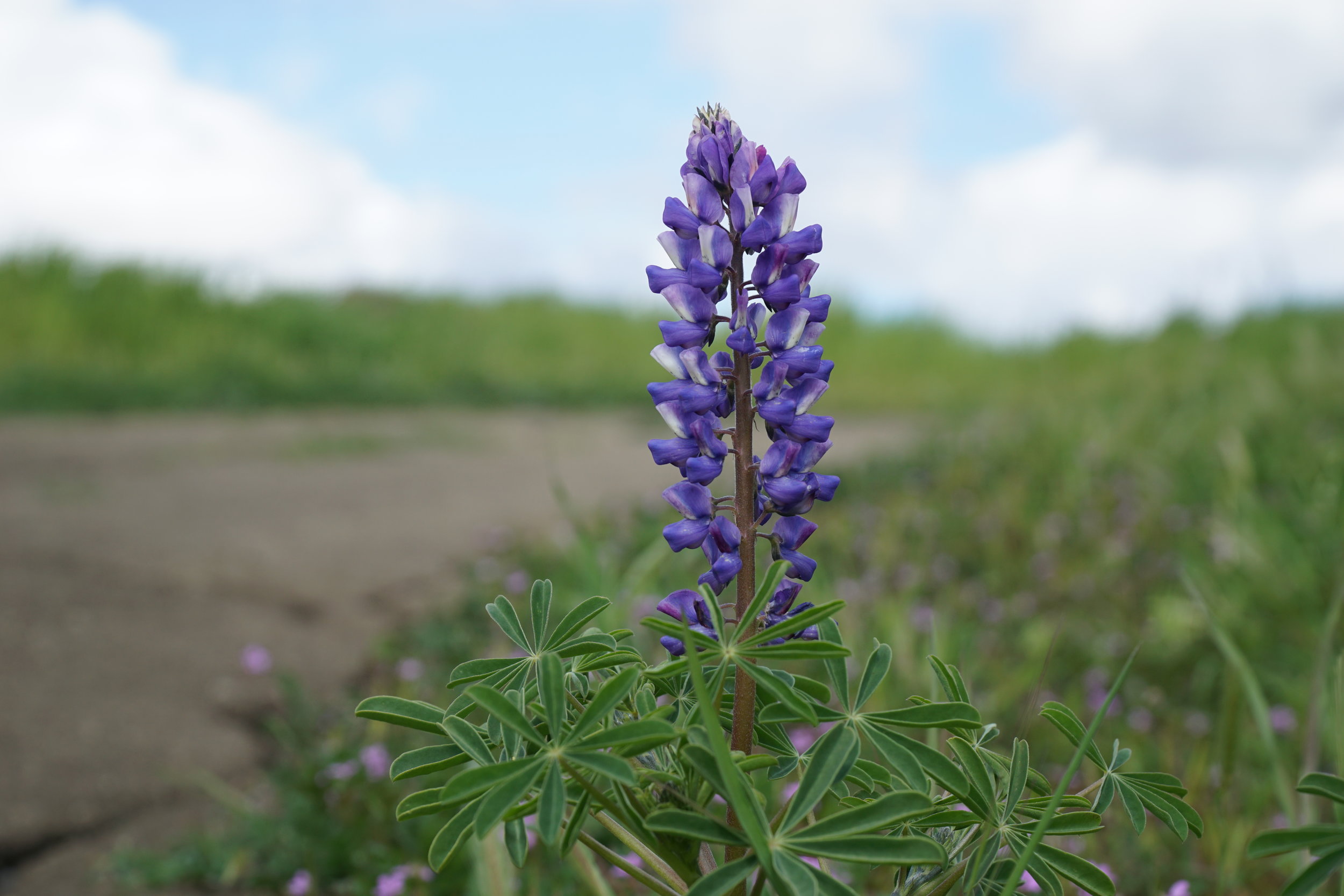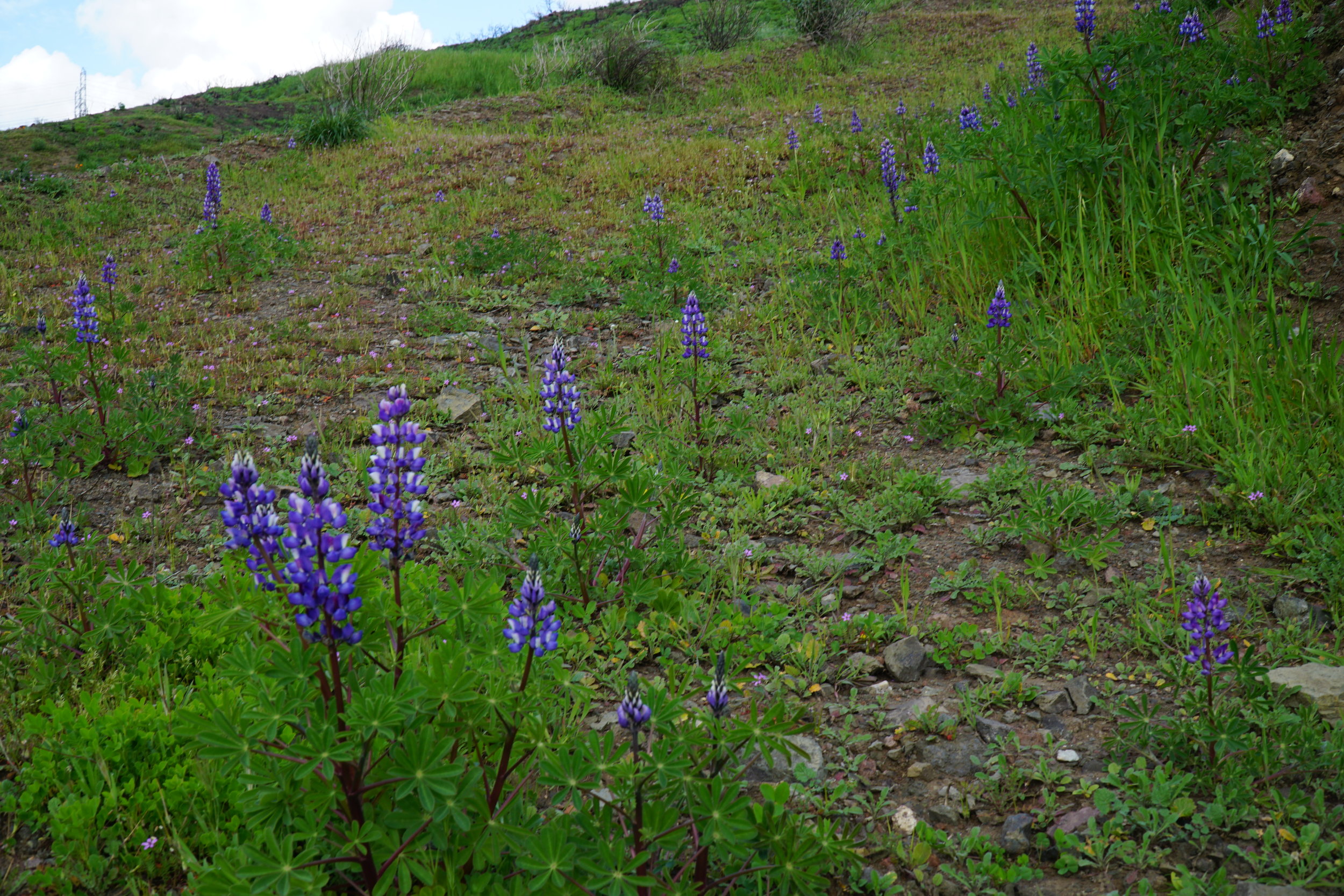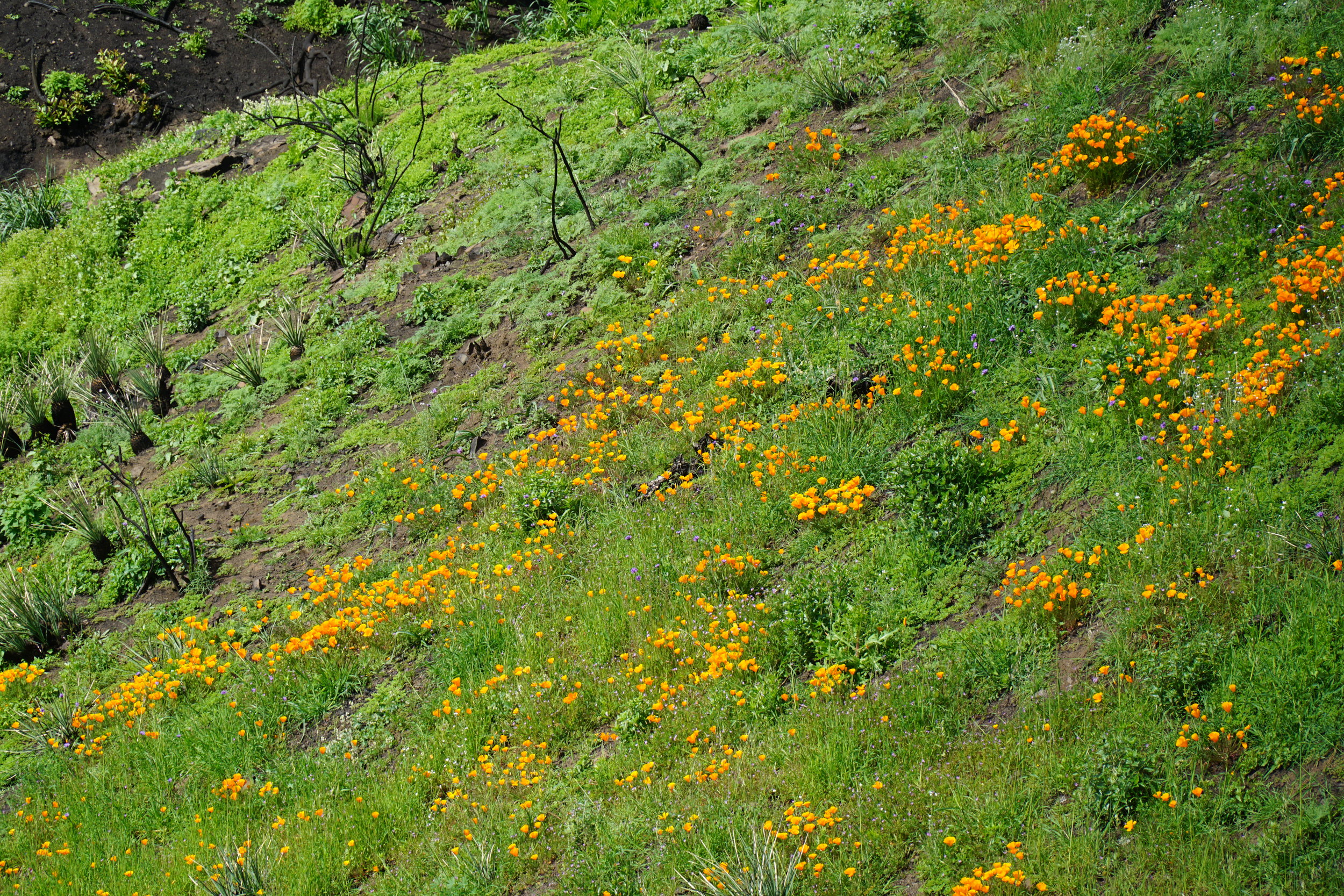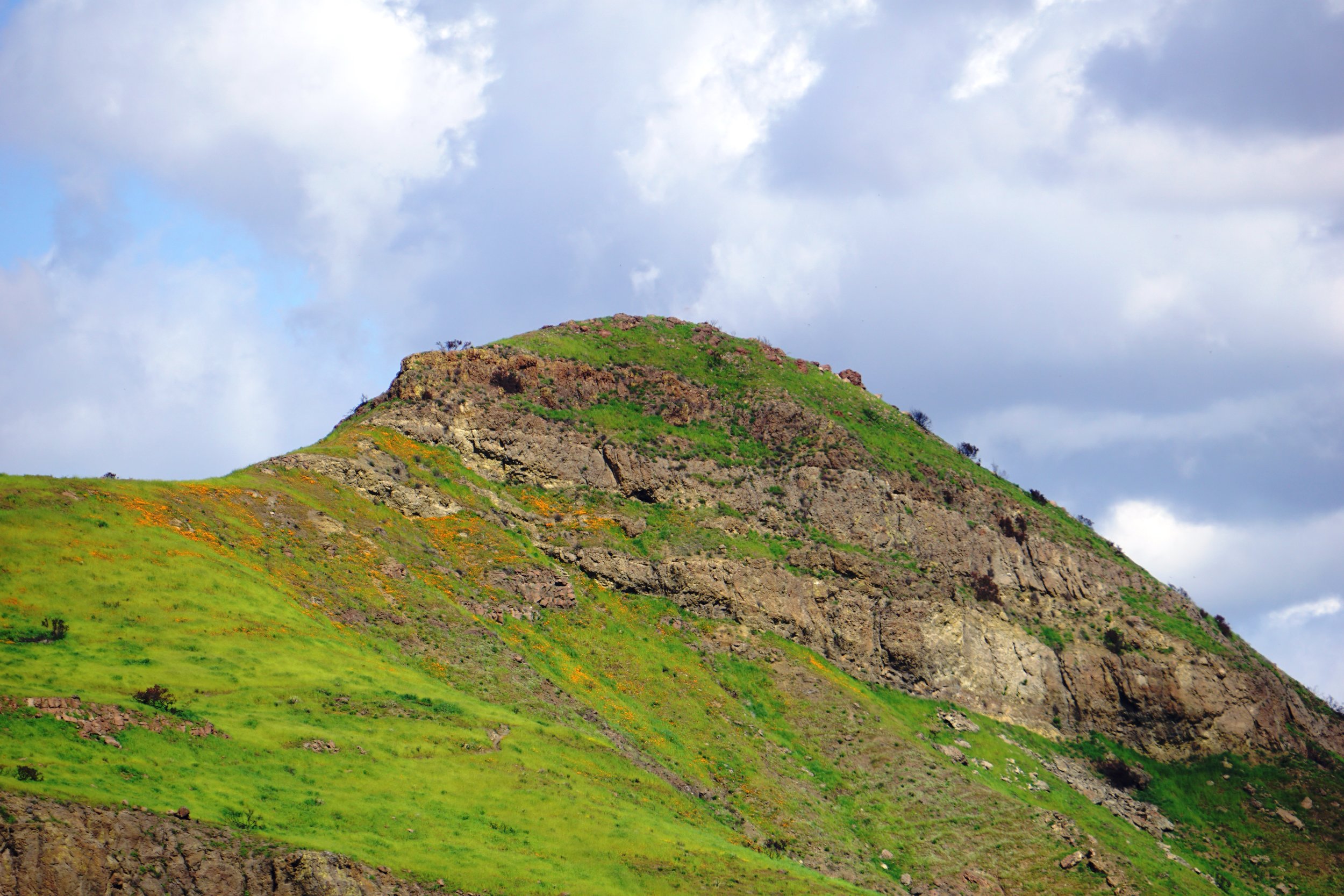The Coreopsis are in full bloom at Point Dume Natural Preserve and are worth going out of your way for. Sweetening the deal this week was the migration of Painted Lady butterflies, stopping for a snack.
Every year, March is the time to visit Point Dume to enjoy the peak blooming of the flowers, combined with beautiful blue skies and ocean, seals, dolphins, on occasional whale and other scenes. You’re really missing out if you’ve never visited this fantastic local destination.
To get to Point Dume State Beach, take Westward Beach Road southeast from PCH near Zuma Beach's south side to the paid parking area (or park on Westward Beach Road and walk the length of the parking lot, about half a mile, to the trailhead)
Point Dume Natural Preserve is protected land, so do stay on marked paths and enjoy your surrounds with your eyes only. The stairs/steps from the parking lot at Point Dume State Beach are a bit uneven and worn down, so do be careful with the little ones.
There’s a platform with seating on the southernmost side of the bluff where you can enjoy viewing the sea life.


